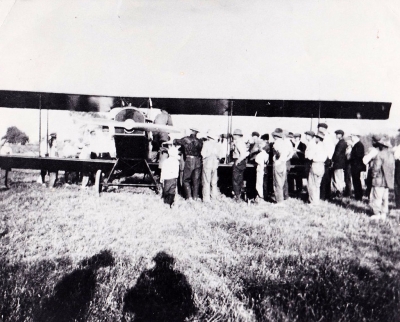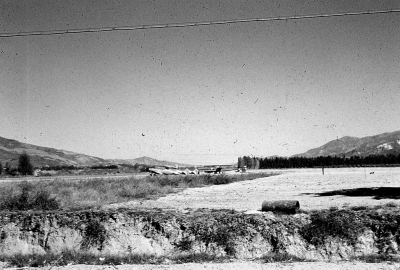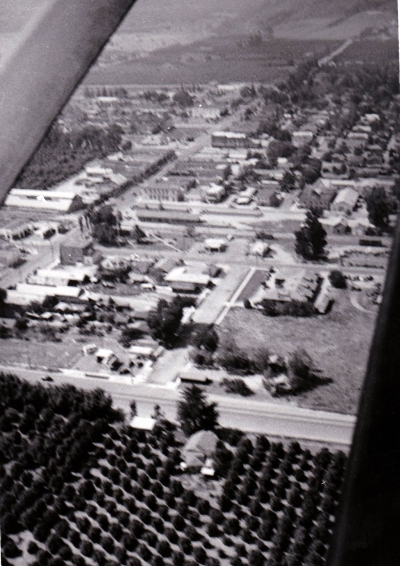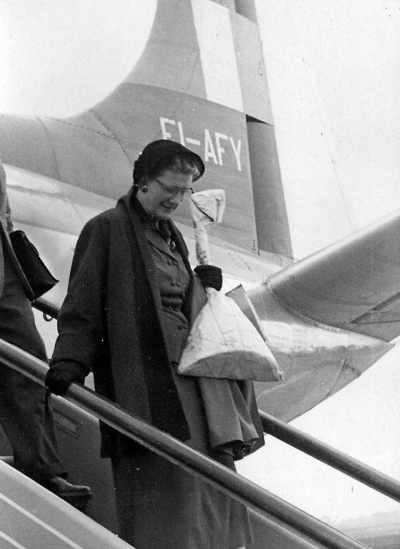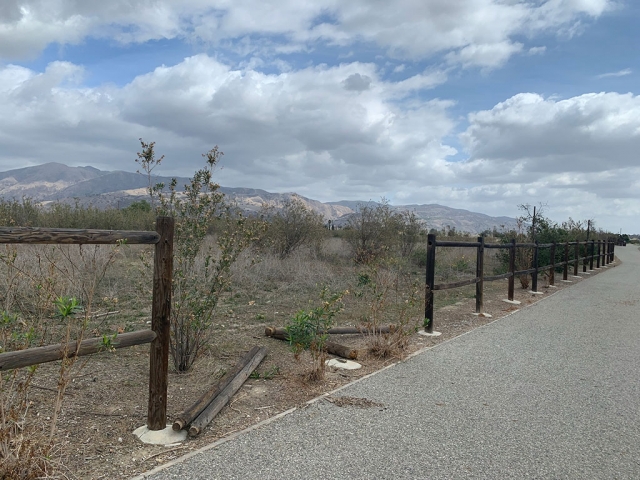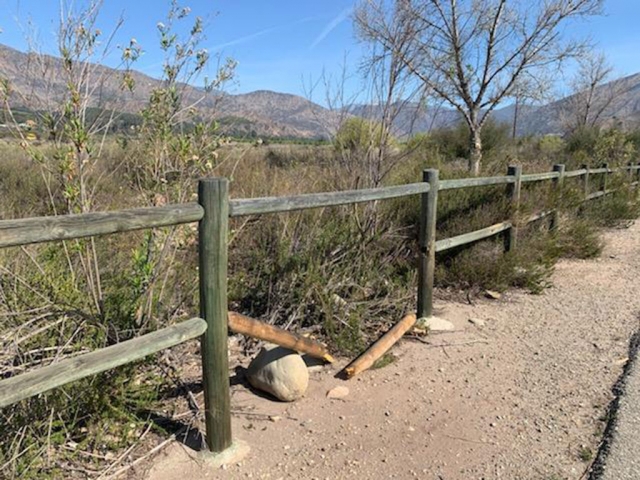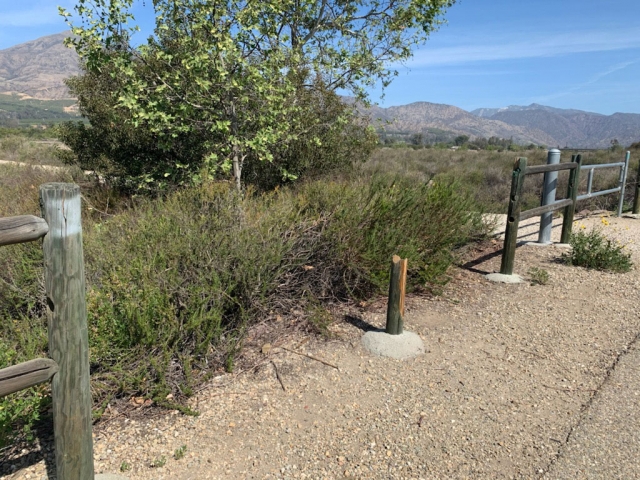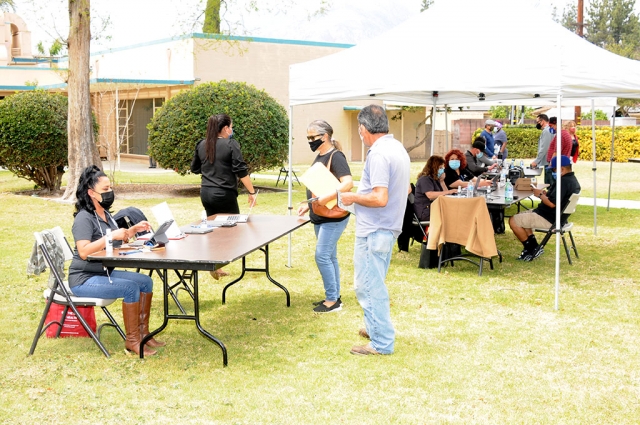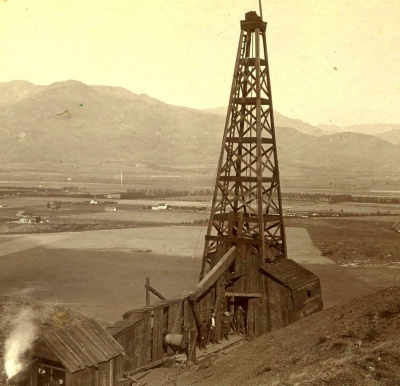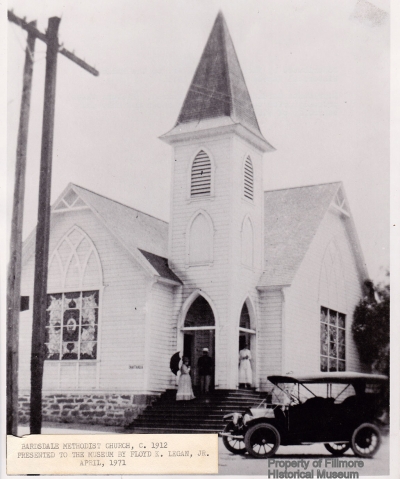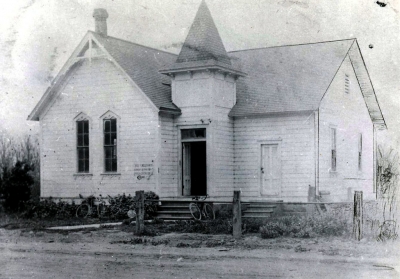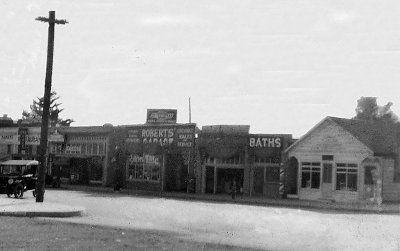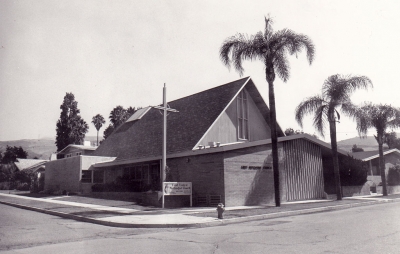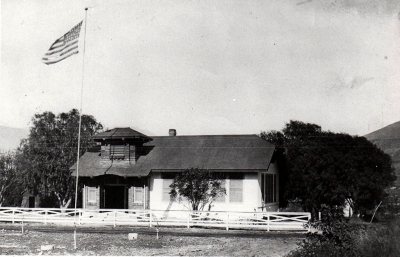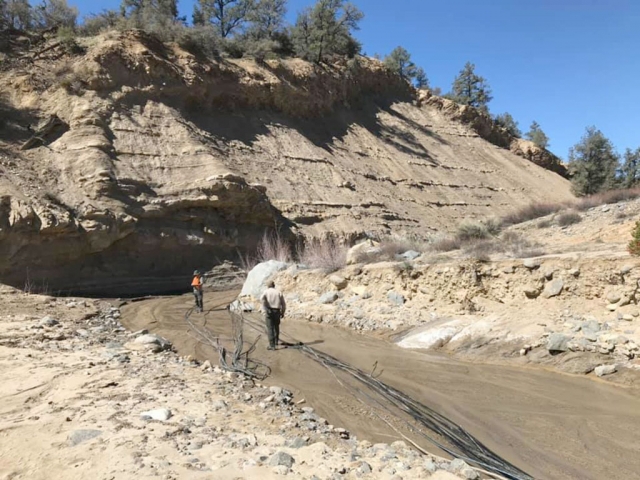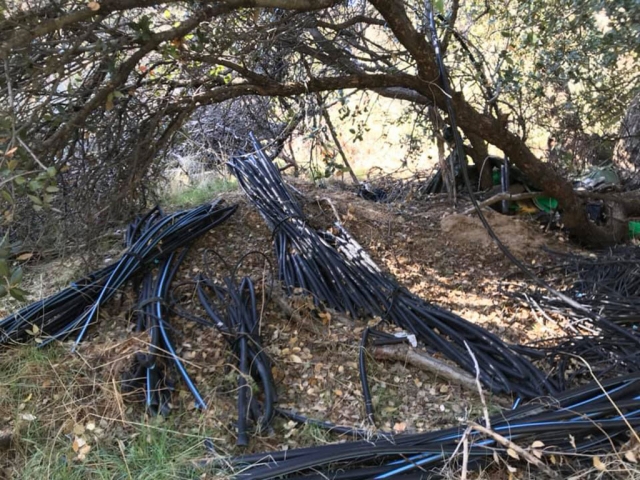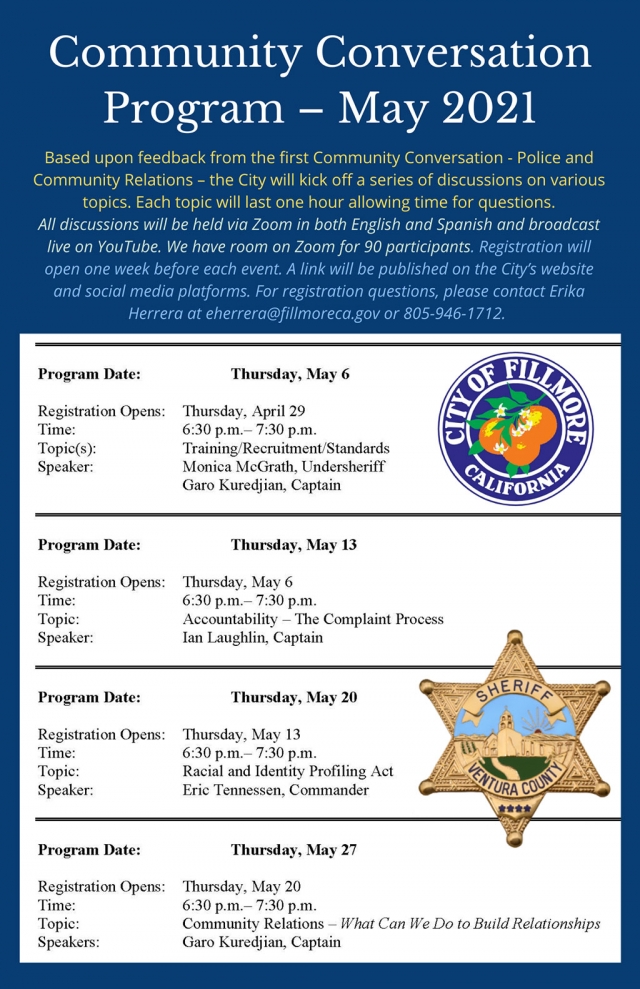 Don Shaw, in glider, and Ebbie Wileman at the wing. Photos courtesy Fillmore Historical Museum. Enlarge Photo By Anonymous — Wednesday, April 21st, 2021
Courtesy Fillmore History Museum After the First World War, a new phenomenon swept the United States – Barnstormers. Men, who often had learned to fly during the war, traveled the country doing aerobatics, showing the skill of the pilot and the sturdiness of the airplane. Frequently these barnstormers were employed by aircraft manufacturers. That was the case in August of 1919 when the first barnstormer came to Fillmore. Lieut. Arnold Popic was an “aerial demonstrator” for the Zenith Aviation Company. The August 8, 1919 Herald reported that Lt. Popic had arrived the prior Wednesday “floating gracefully over the city” in his open cockpit machine and landed in a field to the west of the Sespe bridge. Two tickets for flights had been sold, one to C. C. Bufkin and one to John Opsahl. Mr. Bufkin took the first flight. Unfortunately, the field had not been prepared properly and the plane struck a deep gully and “its snoot plowed in the opposite bank.” Neither Mr. Bufkin nor Lt. Popic were injured but the plane was damaged to the point it could not fly without repairs. The next week the following ad ran in the paper: Basolo field was a recently mown alfalfa field, located just south of the Bardsdale Bridge. Tickets were $10 for a 10-minute ride and it was reported that 53 tickets were sold for the three days, with the understanding Mr. Bufkin and Mr. Opsahl would get the first flights. For an extra charge, a customer like Homer Cheek, the manager of Rancho Sespe, could take the stunt flight which included flying upside down, along with dips, dives and spins. You could also pay extra to fly higher, up to 3500 feet. It was not just the men who took flight, several women including Edith Moore, age 21, and Hortense Wood, age 14. It is clear that this event and others like it inspired many folks in Fillmore to take up flight – either as pilots, or like Edith Jarrett, becoming world travelers. The news reports didn’t mention whether Betty Elkins, daughter of C. C. Elkins, Jr, and granddaughter of C. C. Elkins, took one of these flights in August of 1919. But according to a story in the May 21st, 2008 issue of the Gazette, Betty became interested in flying at the age of 9 when she won a ride in a Curtiss Jenny by selling magazine subscriptions. In 1929, she married a stunt pilot, Fred Lund, who was World Aerobatic Champion in 1930. Lund taught the former Betty Elkins to fly, and she soon set the woman’s record for doing sixty-seven barrel rolls in twenty-eight minutes. When Lund was killed while competing in a pylon race in Kentucky, Betty took over his appearance contracts and eventually began barnstorming on her own.By the end of the 1930s she was one of the leading stunt pilots in the country. During World War II she served as a WAF transporting airplanes from the West Coast production plants to the East Coast for transport to Europe. Some young people were not content with flying the machines, some wanted to build them too. Two high school students, Don Shaw and Edward “Ebbie” Wileman, built a glider about 1931. No one expected it to fly but fly it did. Unfortunately, it was destroyed in a windstorm. Fillmore’s first airstrip was created in 1928, just east of town and south of the highway, near the current fish hatchery. The area had been swept clean of vegetation by the St. Francis Dam flood. The oil from the Ventura Refinery (later Texaco) was poured on the future runway, covered in sand, disked in and the steps repeated. After compacting by driving heavy trucks over it, the airfield was ready. Many Fillmoreians learned to fly on this strip. This strip was eventually abandoned with the Depression and World War II. Before it went out of service, L. E. Hammond announced the opening of a complete aircraft and engine service. To help advertise his new venture, he flew his own plane under the Bardsdale Bridge, with several inches to spare above and below. Despite not having a formal airfield, airplanes did insist on landing at Fillmore. The story is told of one dark, rainy evening residents hearing the sound of a large plane circling the town. No one is sure how the word got out but within minutes a line of automobiles hurried out of town to a likely flat spot and divided into two rows of bright headlights, one on each side of the impromptu runway, to guide the pilot in. Through the rain a Lockheed Electra made a three-point landing with five terrified passengers. Apparently, the plane had left Bakersfield for Burbank and had gotten lost. After World War II there was renewed interest in having an airport and a new airfield opened near where that first barnstorming plane landed in 1919 and once again became known as Basolo Field, but never received support from the town fathers so lasted only a few years. |
Now Hiring: Deputy City Clerk
The City of Fillmore is seeking a detail-oriented and highly organized professional to join our City Clerk’s Office as Deputy City Clerk. This key role supports City Council operations, maintains official records, ensures legal compliance, and helps uphold transparency in local government. If you’re passionate about public service, governance, and supporting elected officials, we encourage you to apply. Learn more and apply at www.fillmoreca.gov.
|
By Anonymous — Wednesday, April 14th, 2021
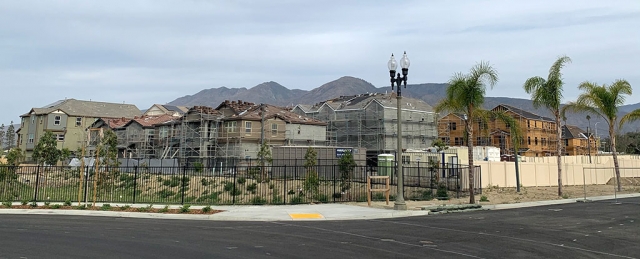 KB Homes Citrus Grove development behind Vons shopping center on River Street as shown from the back of the property looking north from Edgewood and Central Avenue. These are just some of the 104 units being built on the property to house 375 residents. Enlarge Photo |
|
By Anonymous — Wednesday, April 14th, 2021
 On Friday, April 9th, at approximately 4pm at the corner of Central Avenue and Ventura Street, a fight broke out. Police, CSI and Sheriff ’s detectives responded to the scene to secure the area to conduct their investigation. No further information was available. Photo courtesy Angel Esquivel—AE News. Enlarge Photo |
|
By Anonymous — Wednesday, April 14th, 2021
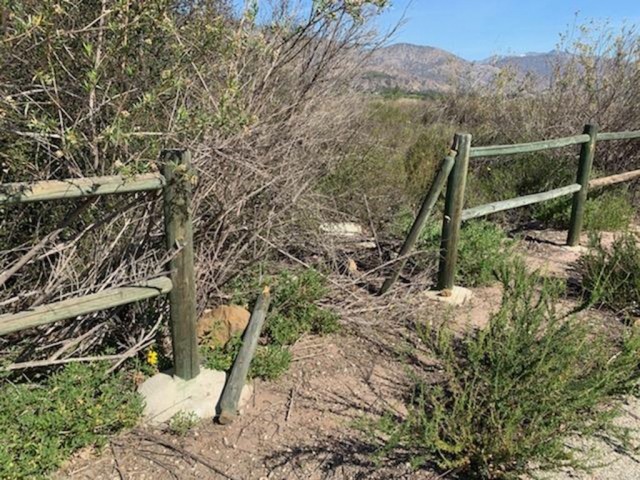 Fillmore’s scenic bike paths are in need of repair. Vandals have damaged the wood posts along the path to the north of the City’s water reclamation plant and running along the east side of the Sespe River heading into north Fillmore. Graffiti, trash and canine waste are also a problem along the paths. Enlarge Photo |
|
By Anonymous — Wednesday, April 14th, 2021
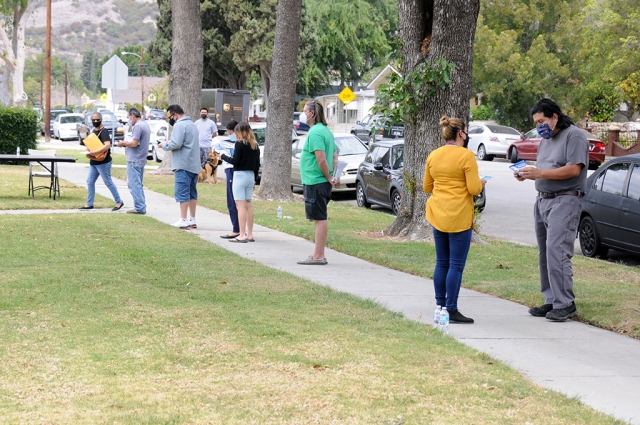 Wednesday, April 7th & 14th between 10am and 3pm residents lined up behind the Veterans Memorial Building to receive their COVID-19 vaccines hosted by the County of Ventura. The next Vaccine Clinic’s will be held April 21st & 28th from 10am – 3pm at the Veterans Memorial Building. To receive a vaccine, residents must register at https://www.ventura county recovers.org/. Also, please note that only eligible individuals based on the current vaccine tiers will be able to obtain a registration. Enlarge Photo |
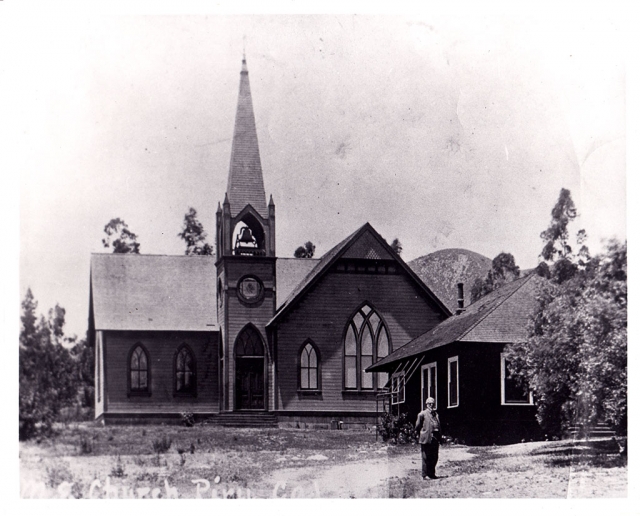 David C. Cook in front of the Piru Church. He paid for the building of the Piru Methodist Episcopal Church and also built the Piru Mansion, which was his home; both are still standing today. Photos courtesy Fillmore Historical Museum. Enlarge Photo By Anonymous — Wednesday, April 14th, 2021
Courtesy Fillmore Historical Museum Religion and spiritual support were always a major factor in the lives of our earliest pioneers. Those first brave settlers initially looked to itinerant circuit riders who had also moved west as the United States expanded. Most of Fillmore’s early churches were organized under the live oak trees of Kenney Grove. Thus Sespe may be regarded as the birthplace of the churches in the east end Ventura County. In 1873, the first Sunday School in the Santa Clara River Valley was organized by families living near Cienega (the current location of the Fillmore fish hatchery). This was a location on the wagon road to the coast and initially a stage stop. The first services were held by a Baptist preacher, Reverend Riley, with music supplied by Mrs. Sam Guiberson. The first major milestone in the life of the church was a celebration of our nation’s founding on July 4th 1876. The Reverend John Warner Guiberson led the services with both the Sespe and Santa Paula Choirs performing. At the time there was no church building on the Sespe but there was already a Sunday school and Ladies Aid group. By 1884 the Cienega church group had disbanded and the local Methodists were meeting either at the Sespe school house on the corner of Muir St. and Sespe Ave (now Grand Ave) or at Willow Grove School on the south side of the river. The preacher was Rev. Wilhite. In the 1890s the Sespe Methodist Episcopal Church was built near Muir St. and Grand Ave. (over time the Methodist Episcopal churches would drop the Episcopal designation). The original Sespe School house was moved several times from its original location on the banks of the Sespe River. Its first move was to the banks of the Santa Clara River near the current bridge crossing from Bardsdale. It was later moved back to the Sespe and then into Fillmore where it was located on the south west corner of Central and Sespe St. where first it was used as a drugstore with a residence in the back and later a restaurant. There it remained until the 1930s when it burned down in a late night fire. In 1887, before the arrival of David C. Cook in Piru, the Methodist congregation met in a schoolhouse near the mouth of Piru Canyon on Main St. Cook had come west from Elgin, Illinois, for his health. He had been very successful as a publisher of Sunday School literature and was deeply religious. He was the founder of Piru and the son of a Methodist minister. Initially he hosted church services under the live oaks in his own yard. He paid for the building of the Piru Methodist Episcopal church and also built the Piru Mansion, his home. Both still stand. He also planned to develop a replica of the Holy Land in Piru Canyon. But his health improved and he returned to Illinois. The olive trees growing along the road to Piru Lake are the only remnants of his Holy Land project. Bardsdale in 1890 was mostly dry land farming where the early farmers grew beans, potatoes and raised cattle and sheep. The 1890s also saw the development of an oil industry. Some of the first settlers were German immigrants. Among them were Haases, Bartels and Baldeschweilers (later Balden). They built a small German Evangelical church which also served as a school house. Services began in 1892 and were in German in the morning and English in the afternoon. The small building still stands on Owen St. in Bardsdale though it has been remodeled and moved. In 1887, Royce Surdam purchased 1,599 acres south of the Santa Clara River and platted out the city of Bardsdale. The development was approved by Ventura County and he proceeded to sell the land for homes. Within the plat plan there were lots for houses, stores, churches and schools. But, plans were almost immediately derailed by the coming of the railroad on the north side of the river. Try as he could, Surdam could not sell the lots for houses so he began to sell land to the immigrant farmers for agricultural purposes. The only buildings built were the Bardsdale School and Bardsdale Methodist Episcopal Church both of which still stand today. The church is still an active Methodist Church and the school is now a private home. Both can be seen on Bardsdale Ave and Ventura St. The Methodist church was built in 1898 and still has an active congregation today. In 1910 the Fillmore Methodists met in Fillmore’s Stephens Hall (located on the alley behind Stephens Store – now La Estrella Market) to discuss the organization of Fillmore Methodist Episcopal Church. Their first Church building was built in 1913. The first service was on Dec. 20, 1912, but the building was not finished and there were no chairs – they had to borrow some. In 1957, ground was broken for a social hall. Once that building was finished the old wooden church was taken down and a new church building built. The church and social hall are now owned by One Step A La Vez. The former social hall now serves as their activity center. The history of Methodism in valley parallels the history of the pioneers and their families and the history of our part of the Santa Clara River Valley. |
|
By Anonymous — Wednesday, April 7th, 2021
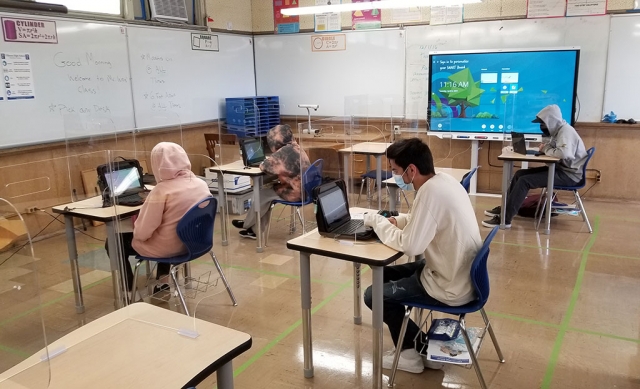 On Tuesday, April 6th, Fillmore Unified reopened its doors for in-person learning. Schools closed down in March of 2020 due to the COVID-19 pandemic and now they are slowly reopening. Students and staff are on a schedule where some students do both in-person and distance learning during the week. Above are students at Fillmore High sitting physically distanced in Charlie Weis’ mathematics class. Enlarge Photo 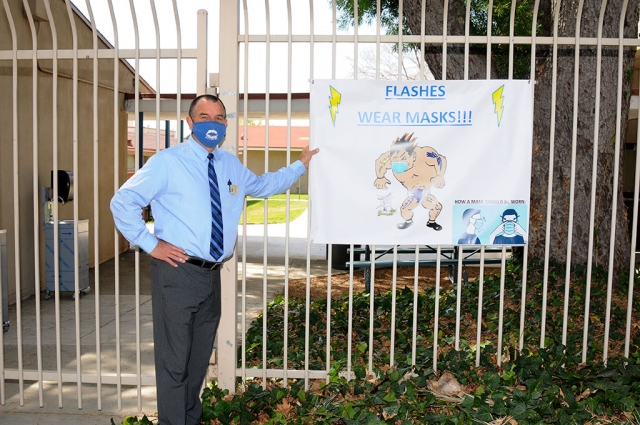 FHS Principal John Wilber standing next to a sign reminding students and staff to wear their masks. Enlarge Photo 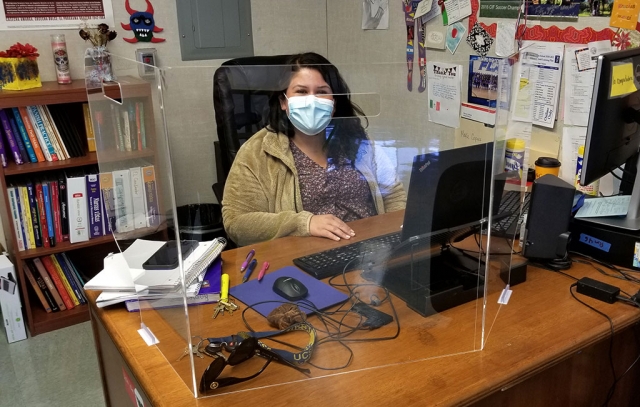 Karina Romero teaching high school Spanish to both in person and distance learning students. Enlarge Photo 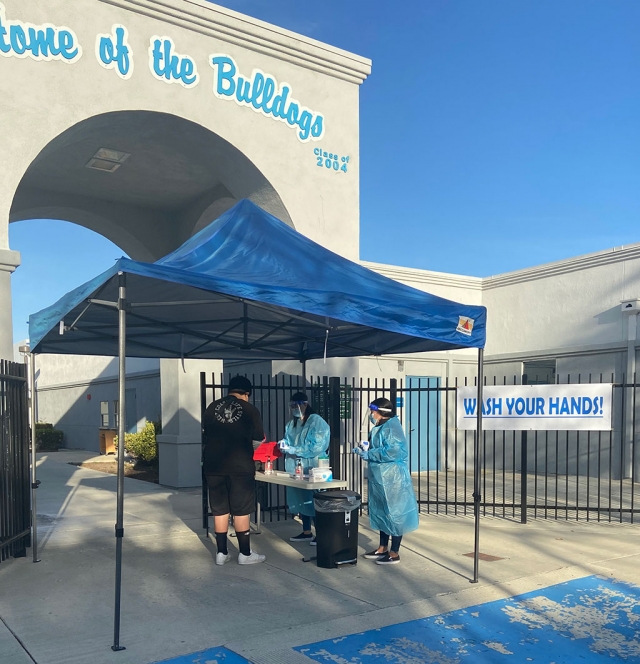 Fillmore Middle School also reopened their gates on April 6, 2021 to teachers and a limited number of students. Their goal is to bring back additional students soon. Enlarge Photo 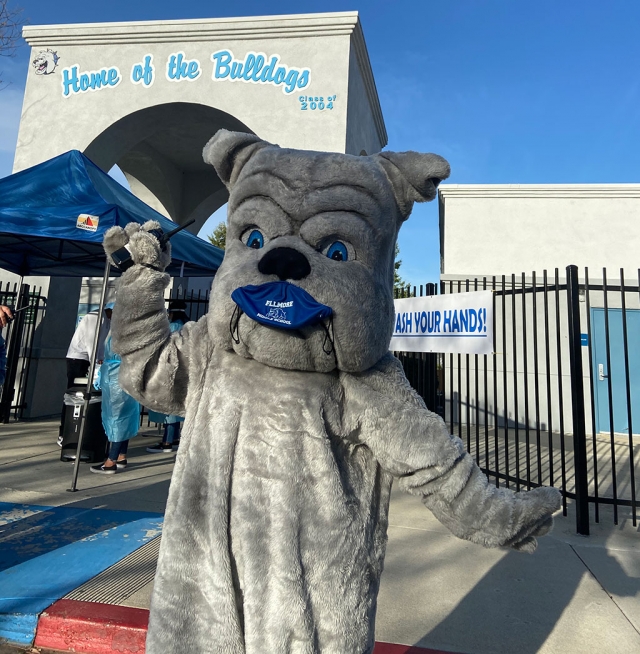 Fillmore Middle School mascot, the bulldog, was on campus to welcome students as they returned to campus. Enlarge Photo |
|
By Anonymous — Wednesday, April 7th, 2021
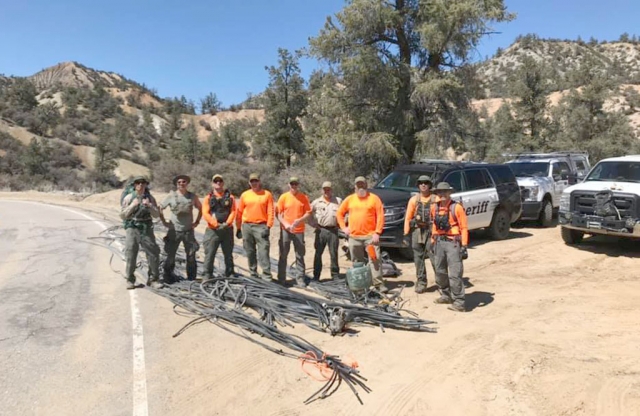 On March 27th, Fillmore Search and Rescue and Lockwood Station joined forces to clean up an old, illegal marijuana grow location in the Los Padres National Forest near Lockwood Valley. The team removed approximately 6,000 feet of irrigation line from the forest which will aid in future efforts to combat the illegal cultivation of marijuana on public forest lands. Courtesy Ventura County Sheriff’s Department Facebook. Enlarge Photo |
|
By Anonymous — Wednesday, April 7th, 2021
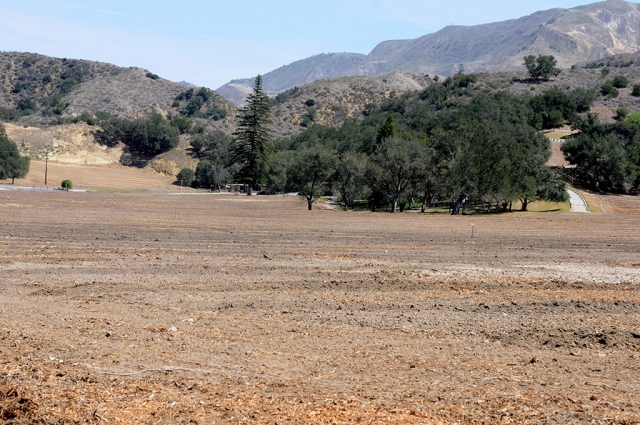 The Elkins Golf Course has recently become Elkins Ranch. The greens, clubhouse and cafe are no more and avocado orchards will soon be planted. Many people will miss the golf course but most would agree avocado trees will be much better than more houses. Thanks for the memories, Elkins. Enlarge Photo |
|
By Anonymous — Wednesday, April 7th, 2021
Based upon feedback from the first Community Conversation - Police and Community Relations – the City will kick off a series of discussions on various topics. Each topic will last one hour allowing time for questions. All discussions will be held via Zoom in both English and Spanish and broadcast live on YouTube. We have room on Zoom for 90 participants. Registration will open one week before each event. A link will be published on the City’s website and social media platforms. For registration questions, please contact Erika Herrera at eherrera@fillmoreca.gov or 805-946-1712. https://www.youtube.com/channel/UCnO2vlq-9iZRqVR9TOYg75g. Courtesy City of Fillmore Facebook Page. |

